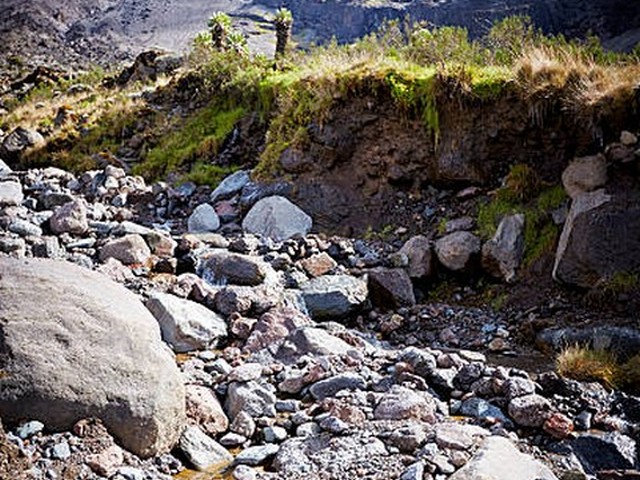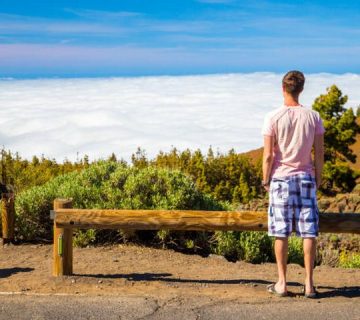Capture the Wild Heart of Africa: Kilimanjaro’s Unique Flora and Fauna – Photography Tips
Introduction: Why Kilimanjaro is a Photographer’s Paradise
Nestled in the heart of Tanzania, the majestic Mount Kilimanjaro isn’t just a towering beacon for trekkers but a vibrant ecosystem brimming with unique flora and fauna. At the Kilimanjaro Centre for Trekking and Ecotourism (KCTE), we believe that capturing the essence of Kilimanjaro through a lens is as exhilarating as reaching its summit. This blog post dives deep into the lush landscapes and diverse wildlife of Kilimanjaro, offering you essential photography tips to bring the best of your adventure home. Whether you’re an amateur shutterbug or a seasoned photographer, Kilimanjaro’s extraordinary biodiversity is a muse you cannot afford to miss!
H2: Discover Kilimanjaro’s Flora: A Botanical Wonderland
The Alpine Desert and its Minimalist Beauty
Venture above the clouds, and you’ll find the alpine desert of Kilimanjaro, where vegetation is sparse but strikingly beautiful. The giant groundsels (Senecio kilimanjari) and the lobelia deckenii stand tall against the rocky backdrop, providing excellent subjects for high-contrast photography. Capture these resilient species in the golden hours of sunrise or sunset to enhance the dramatic shadows and the richness of the terrestrial textures.
The Lush Montane Forests
Descending into the montane forests, the scenery shifts dramatically. Here, the dense canopy is alive with vibrant green hues. Ferns, mosses, and flowering plants like the Impatiens kilimanjari create a verdant tapestry that begs to be photographed. Use a polarizing filter to cut the glare and saturate the colors, ensuring your photos capture the depth and diversity of this ecological zone.
H2: The Fauna of Kilimanjaro: Snapshots of Wildlife in their Natural Habitat
Birdlife: From the Malachite Kingfisher to the Crowned Eagle
Kilimanjaro is a birdwatcher’s heaven. The malachite kingfisher, with its brilliant turquoise plumage, makes for a stunning photograph against the water bodies near the mountain. Meanwhile, the regal crowned eagle often spotted soaring high in the skies, provides a fantastic opportunity for dynamic wildlife photography. Experiment with different shutter speeds to either capture a crisp image of their flight or create a sense of motion with a slight blur.
Mammals: The Shy Duikers and the Mighty Elephants
While elephants are occasionally sighted along the lower slopes, smaller mammals like the blue monkey and the elusive Abbott’s duiker inhabit the forests. Capturing these shy creatures requires patience and a silent approach. Opt for a telephoto lens and stay ready to snap quickly; these animals are masters of disappearing into the thicket!
H2: Photographic Techniques for Capturing Kilimanjaro’s Essence
Mastering the Art of Landscape Photography
Kilimanjaro’s diverse ecosystems provide panoramic vistas that are perfect for landscape shots. Use a wide-angle lens to capture the expanse, and consider the rule of thirds to compose your images effectively. Early morning light offers a soft glow that enhances textures and depth in your landscape photos.
Macro Photography: A Closer Look at Kilimanjaro’s Smaller Wonders
Don’t overlook the minute details of Kilimanjaro’s ecosystem. The dew on a spider web or the intricate patterns on a butterfly’s wings can become the focus of stunning macro photographs. A macro lens and a steady hand will help you capture these details in sharp relief.
Ethical Wildlife Photography
Always maintain a respectful distance from wildlife. Use your zoom lens and avoid using flash, as it can startle animals. The welfare of Kilimanjaro’s fauna should always come before the perfect shot.
H2: Best Times and Locations for Photography on Kilimanjaro
Seasonal Splendor
The best photography conditions are generally during the dry seasons, from late June to October and from late December to mid-March. Skies are clearer, and the visibility is excellent, making these months ideal for both wildlife and landscape photography.
Vantage Points Worth the Hike
The viewpoints from Shira Plateau offer sweeping views of the mountain and are excellent for sunrise or sunset photography. Meanwhile, the forested areas of the Marangu and Rongai routes are great for capturing wildlife and lush landscapes.
Summary: Your Photographic Expedition Awaits
Embarking on a photographic journey to Kilimanjaro with the Kilimanjaro Centre for Trekking and Ecotourism (KCTE) isn’t just about filling your camera with images. It’s about capturing memories, experiencing the raw beauty of nature, and respecting the environment that hosts these wonders. Our guided treks ensure that you have the opportunity to see the best spots, guided by experts who know the mountain like the back of their hand.
FAQs
Q1: What type of camera gear is recommended for trekking Kilimanjaro?
A1: A DSLR or mirrorless camera with a good range of lenses (wide-angle, telephoto, and macro) is ideal. Don’t forget extra batteries and memory cards due to the cold temperatures and limited charging opportunities.
Q2: Are there any photography tours specifically aimed at capturing Kilimanjaro’s flora and fauna?
A2: Yes, at KCTE we offer specialized photography tours that focus on the unique biodiversity of Kilimanjaro, guided by professional photographers who know all the perfect shots.
Q3: What is the policy on drone photography on Kilimanjaro?
A3: Drone photography is strictly regulated in Tanzania, and permits are required. Contact us at KCTE, and we can provide assistance in obtaining the necessary permits.
Call to Action: Book Your Photographic Trek Today!
Are you ready to capture the majestic beauty of Kilimanjaro? Contact Kilimanjaro Centre for Trekking and Ecotourism (KCTE) today, and let us help you plan your photographic expedition to this African jewel. Capture not just images, but experiences that will last a lifetime. Reach out now, and take the first step towards your Kilimanjaro adventure!




